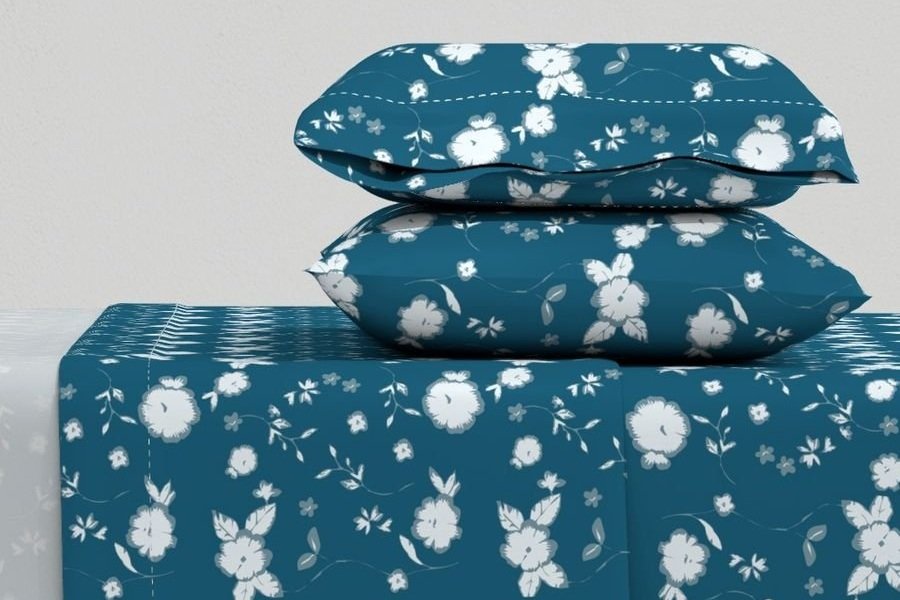The Magic of Chinese Silk
Welcome back to Let's Talk Textiles! In this second segment of our Ancient Textiles Edition, we’re diving into one of the most luxurious and storied fabrics of all time: Chinese Silk. From its discovery to its role in shaping trade and culture across centuries, silk is a textile that weaves together craftsmanship, history, and artistry in a way that few others can match.
The Discovery of Silk by Empress Leizu
Legend has it that the story of silk began with Empress Leizu, the wife of the Yellow Emperor, around 2,600 BCE. One day, while sitting in her garden, the story goes, a silkworm cocoon fell into her tea. As she observed it unravel, she discovered the delicate, lustrous thread within. This moment sparked the beginning of silk production in China, leading to the establishment of one of the world’s most secretive and valuable textiles for thousands of years.
The discovery of silk was not only a breakthrough in textile technology but also a moment in history that helped shape the future of trade and culture. The Chinese carefully guarded the secret of silk production for centuries, making it a highly sought-after commodity across the world.
"In Every Ancient Textile, There Is a Story of Culture, Craftsmanship, and Survival"
Chinese silk is much more than just a beautiful fabric; it embodies the story of an ancient civilization’s ingenuity and skill. From its creation to its place in history, every piece of silk carries a deep connection to culture, craftsmanship, and survival. This fabric wasn’t just a luxury; it became a symbol of wealth and status, and was an essential part of diplomatic and trade exchanges.
The Art of Silk Making
Silk production is a meticulous and labor-intensive process, requiring patience and precision. It begins with the cultivation of mulberry trees, the leaves of which are the primary food source for silkworms. Once the silkworms have eaten their fill, they spin their cocoons—a process that takes about 2-3 days. After harvesting the cocoons, they are boiled to soften the sericin (the protein that holds the silk threads together), and then the threads are carefully unwound.
These long threads are then twisted and woven into fabric, with some of the finest silk requiring thousands of silkworms to produce just one piece. The end result? A smooth, lustrous fabric known for its strength and its beautiful sheen—a perfect example of the craftsmanship that has been passed down through generations.
The Silk Road: A Thread That Tied the World Together
The Silk Road—an ancient network of trade routes that connected China to the Mediterranean, the Middle East, and beyond—was one of the most important cultural exchanges in history. While silk was the fabric that gave this route its name, the Silk Road facilitated the exchange of much more: ideas, religions, innovations, and goods.
Through the Silk Road, Chinese silk reached far and wide, influencing fashion and culture in places like Persia, India, and even Europe. The importance of silk in these exchanges cannot be understated, as it was often traded for valuable items like spices, precious metals, and even horses. Over time, the silk trade helped shape not only economies but also cultural identities across the continents.
"With Time and Patience, the Mulberry Leaf Becomes a Silk Gown."
The mulberry leaf is more than just food for the silkworm; it is the key to producing the highest quality silk. The tender leaves are the foundation of the process, and it is through the careful nurturing of these trees—and the silkworms—that the exquisite fabric is born. "With time and patience, the mulberry leaf becomes a silk gown," is a saying that perfectly encapsulates the dedication and careful artistry required to create silk.
Just as the mulberry leaf nourishes the silkworm, every step in the silk-making process requires patience and skill. This patience is reflected not just in the fabric but in the history of the people who have worked with it for millennia.
Bringing Silk’s Timeless Beauty Into the Modern Day
For this week’s design, I wanted to capture the essence of traditional silk while giving it a modern twist. I took inspiration from the floral patterns that have graced silk fabrics for centuries but chose to reinterpret them in a contemporary way. Instead of the vibrant, saturated colors we typically associate with traditional silk, I opted for more muted, sophisticated tones—mocha, honeycomb, and encore. These colors evoke a sense of quiet elegance, giving the design a timeless, yet modern, appeal.
I named this new pattern “Celestial Blooms,” as the floral shapes seem to float like stars in the night sky, creating a dreamy, ethereal quality. The muted color palette gives it an understated elegance that feels at once ancient and contemporary—a perfect reflection of how I see the fusion of history and modern design in the world of textiles.
You can find “Celestial Blooms” available for purchase on Spoonflower and Zazzle, where it’s available on a variety of products ranging from fabric to home décor.
A New Journey, Every Thread
Just as silk has traveled across the world for thousands of years, so too does the journey of textiles continue today. Each fabric we create tells a story—whether it’s one of ancient empresses, time-honored craftsmanship, or modern creativity. I’m excited to keep sharing these stories with you, and I hope you continue to follow along with Let's Talk Textiles as we explore the timeless beauty of textiles, both ancient and modern.
Stay tuned for next week’s post, and don’t forget to follow me on Instagram and Pinterest for sneak peeks of upcoming designs!
Shop "Celestial Blooms" on Spoonflower and Zazzle today and bring a piece of timeless silk-inspired elegance into your home!






